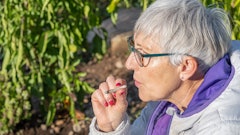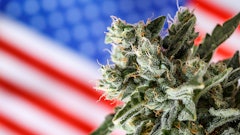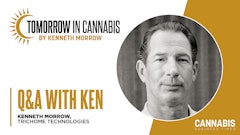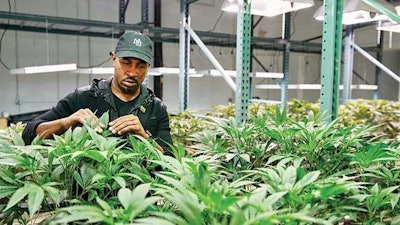

Amid the burgeoning push for adult-use cannabis legalization in the U.S., the marketplace is garnering traction with investors, manufacturers, and researchers alike. The future appears to be bright, as the U.S. cannabis industry is projected to generate $43 billion by 2025, according to New Frontier Data.
For cultivators in nascent markets with limited dispensary shelf space, simply partnering with an established retailer might be considered a win. However, no relationship is static, and there will come a time when growers expect more from their retail partners, and vice-versa.
Negotiating rate increases can test the strength of a cannabis partnership, according to cultivators and retail buyers interviewed by Cannabis Business Times. As challenging as this process may be, both parties can benefit from a smartly bargained collaboration.
“Many retailers get scared, because they see themselves as having the best prices in town,” says Anna Shreeve, owner of Seattle-based dispensary The Bakeréé. “They don’t want to come in with a higher-priced product, yet their customers want it. That’s the evolution of cannabis—at first, you can just smoke anything, but you evolve as a customer as time goes on. You’re looking for different experiences and different strains. That’s the fun of being a cannabis consumer.”
Jesce Horton, co-founder and CEO of LOWD—a craft cannabis cultivation facility in Portland, Oregon—says fierce competition can dissuade cultivators from considering price hikes. Therefore, keeping a close watch on market shifts is a solid starting point for growers looking to negotiate rates.
“It’s so easy to drop prices, but hard to negotiate an increase,” Horton says. “The only thing that [allows for an increase] is a sparse market where cultivators realize they’re getting more calls because there’s a drought. That’s their opportunity to raise prices.”
A clearly communicated initial contract can ease the next round of talks, Horton notes. Parameters that growers and their partners should initially agree to include: monthly flower production; cultivars offered; THC content; and whether the product is machine- or hand-trimmed.
Additional production factors like bud size should not be considered in a new or re-upped contract negotiation, Horton adds. “Bud size is too hard to determine,” he says. “It’s very subjective and not something we’d put in a contract. You’ve got to be clear and up front. The way the market fluctuates, it’s very easy for a lack of communication to lead to a bad customer experience.”
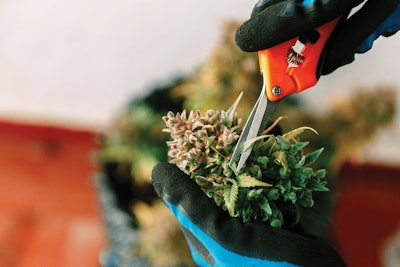
A Good Marriage
Keeping a retail customer happy is obviously a high priority for any cannabis producer. Cultivators must realize they’re in a symbiotic relationship with dispensary partners and should therefore treat price negotiations from a place of equal ground, Shreeve says. According to Shreeve, The Bakeréé selects brands that align with her own “connoisseur smoker” aesthetic, one aimed at everyday users who may consume cannabis to manage post-traumatic stress disorder (PTSD), social anxiety, or sleep disorder symptoms.
What else makes Shreeve’s cultivator partners stand out?
“I make sure to bring in products that fit well with my demographic,” Shreeve says. “If I don’t do it, my competition will.”
Shreeve understands that her partners need to stay in business, too. Any large retail operation making demands on boutique cultivators may force that brand elsewhere. High-end manufacturers should be valued, especially when it comes to price re- negotiations. “Cheap product is a strategy,” she says, “but if you’re a quality provider with unique genetics, why do you need to be where you’re not appreciated?”
When approached by a vendor regarding a price increase, Shreeve prefers to have that conversation in person, first and foremost. In any price discussion, Shreeve says it’s important for brands to understand their consumers. Cultivators agree, adding market knowledge as another vital facet of price renegotiations, fueled further by brand awareness and a deep dive into data.
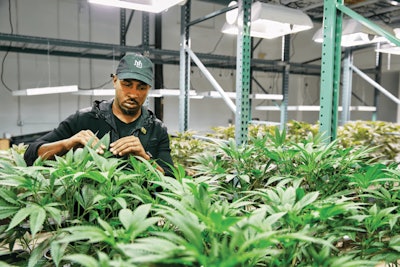
Understand Demand
Consumer awareness is a brand’s responsibility, garnered through ongoing communication with retailers as to who’s purchasing which products. Shreeve calls it “basic CPG”—a knowledge of demand that will place consumer packaged goods in the right dispensary locations.
For retailers, any product creating buzz and driving customer acquisition begs the question, “How much is that really worth to you?”
“It’s not about price per gram, but how much it’s worth to be exciting and have something others don’t in your competitive geographical area,” Shreeve says. “If a retailer doesn’t value the difference in quality and thinks all their products should be at the same price, that may not be a good fit for you [as a high-end or craft grower]. As a grower, don’t beat your head against the wall.”
Price renegotiation has its analytical side, whether it’s weighing a product’s commodity potential or knowing retail markups that consumers are currently clustering around. Along with talking to dispensary partners, growers can subscribe to business-to-business cannabis data services to gain these insights.
Rare Dankness Founder Scott Reach specializes in rare genetics at his 54,000-square-foot cultivation facility in Denver, and wholesales around 80% of his output to dispensaries throughout the state. Data collection is part of Reach’s workday process, though even such dry analysis comes with a personal touch. When considering any price change, Reach looks at what other cultivators in his demographic are charging.
“We try to remain on the higher end of the current market price based on more unique genetics and quality of the final product,” Reach says. “I also reach out to folks involved on the wholesale side to discuss what they’re seeing.
“Retailers always have two questions when talking to us as wholesalers: What are your cheapest pounds, and what’s your highest THC?” Reach says. “Then we find a correlation between those two points to determine what a retailer is willing to spend.”

Brand Awareness
Reach has a salaried employee whose sole purpose is to knock on wholesalers’ doors and show off the company’s quality and consistency. Selling in a market that fluctuates greatly depending on a number of factors, Reach makes sure to showcase a high standard of quality to avoid a race to the bottom.
“People will sell themselves short based on the market rate just to get themselves out there,” Reach says. “The branding and consistency of what we’re putting out has helped us.”
Being a strong partner to retailers mitigates the need to make pricing decisions based on a speculative market, Horton says. If a grower offers services, such as phenotype hunting, that differentiate a retailer from the store down the street, then raising prices will be an easier sell.
“Or you can provide exclusivity on certain strains or products,” Horton says. “We have to spend money on that, and show retailers … how they’ll benefit in the long run.”
Mutually Beneficial Pricing
Ultimately, a fair pricing arrangement advances the aims of both parties, Reach says. On the wholesale front, having a consistent supply chain loosens a potential bottleneck of physical products—polishing the reputations of buyer and seller alike.
For those knocking on their first few doors, Reach offers advice.
“Don’t undersell. That was a learning curve that took a couple of years for us to understand,” Reach says. “Know those overhead costs for your product. When we figured those out, we had better profit margins and … more room to drop or raise prices accordingly.”

















